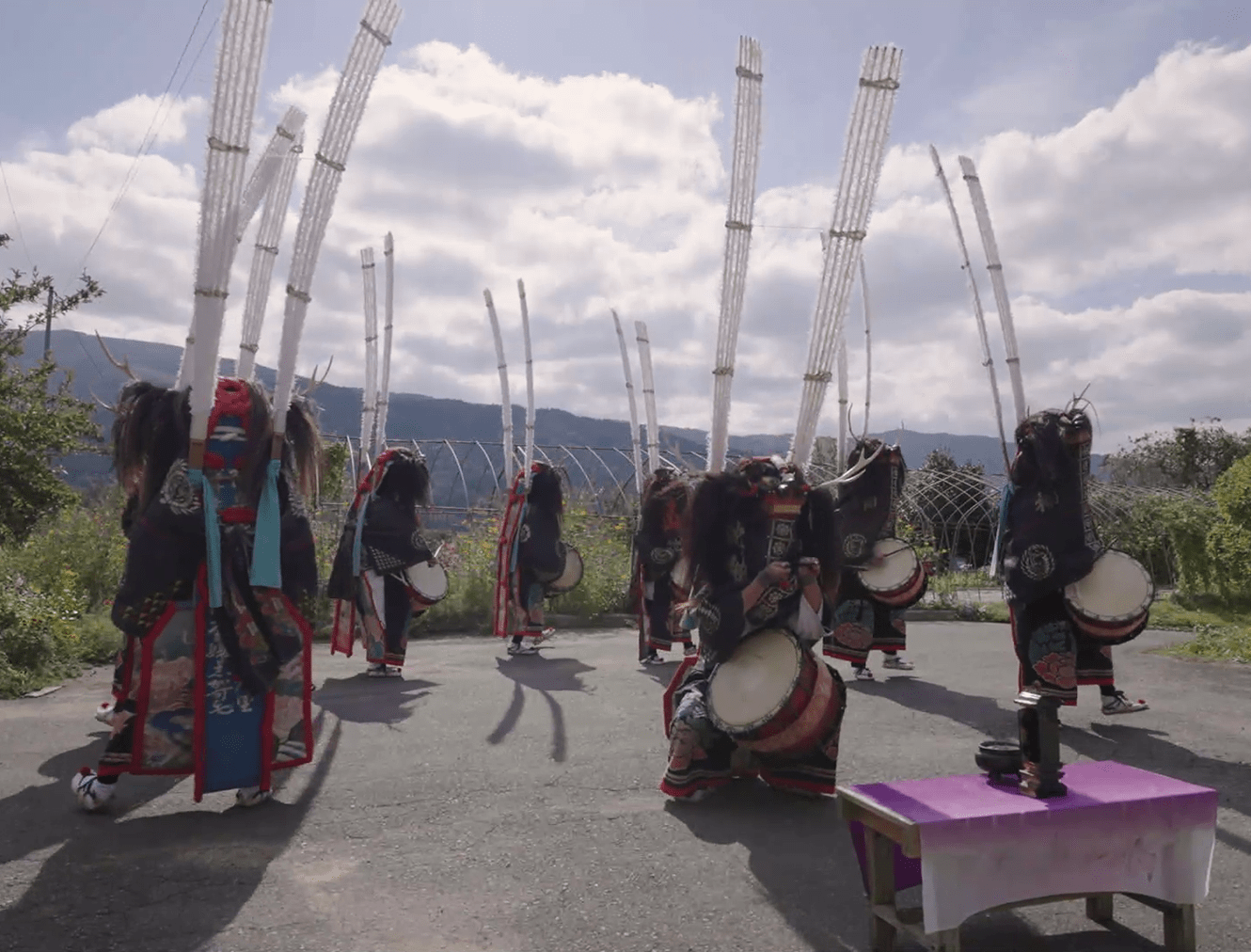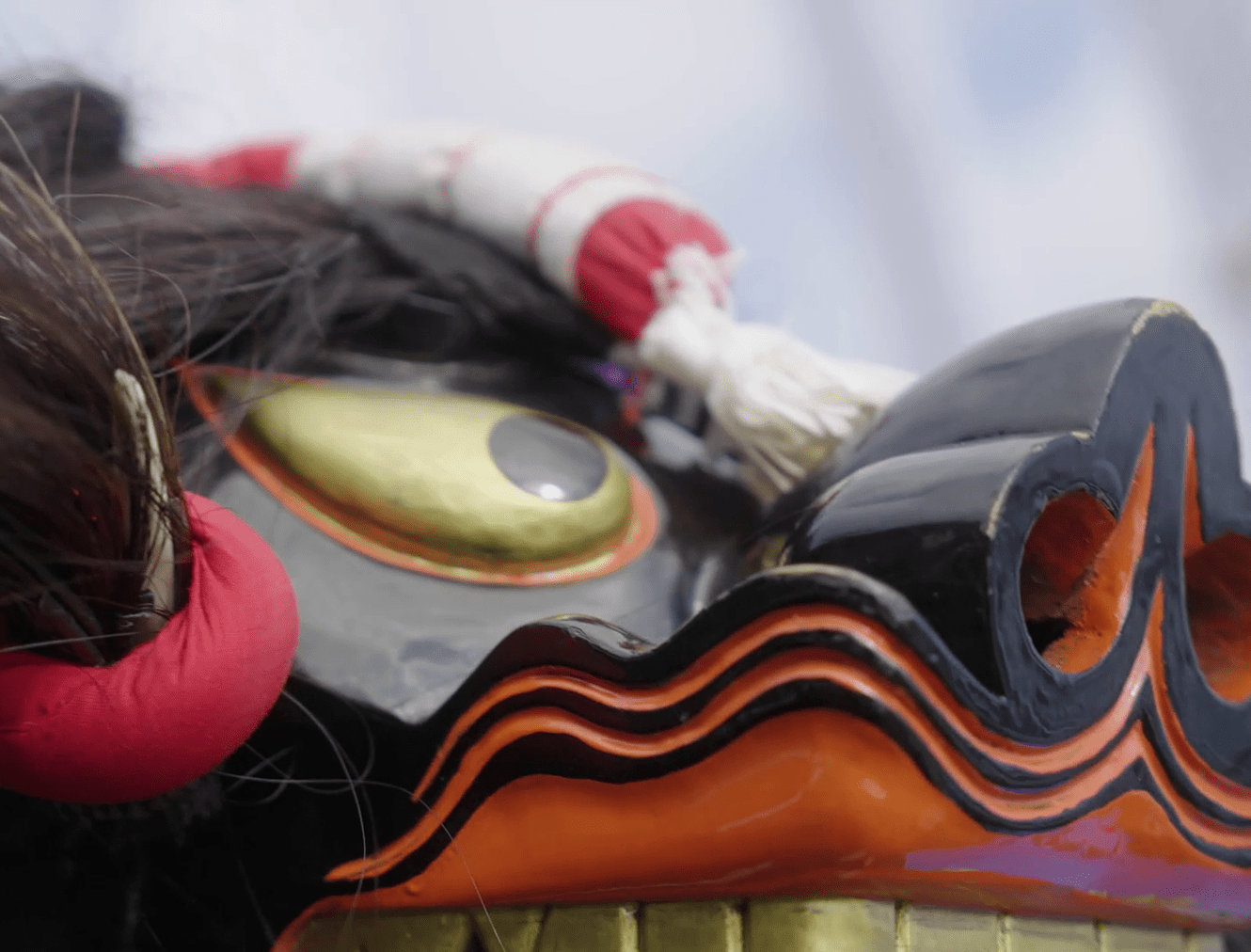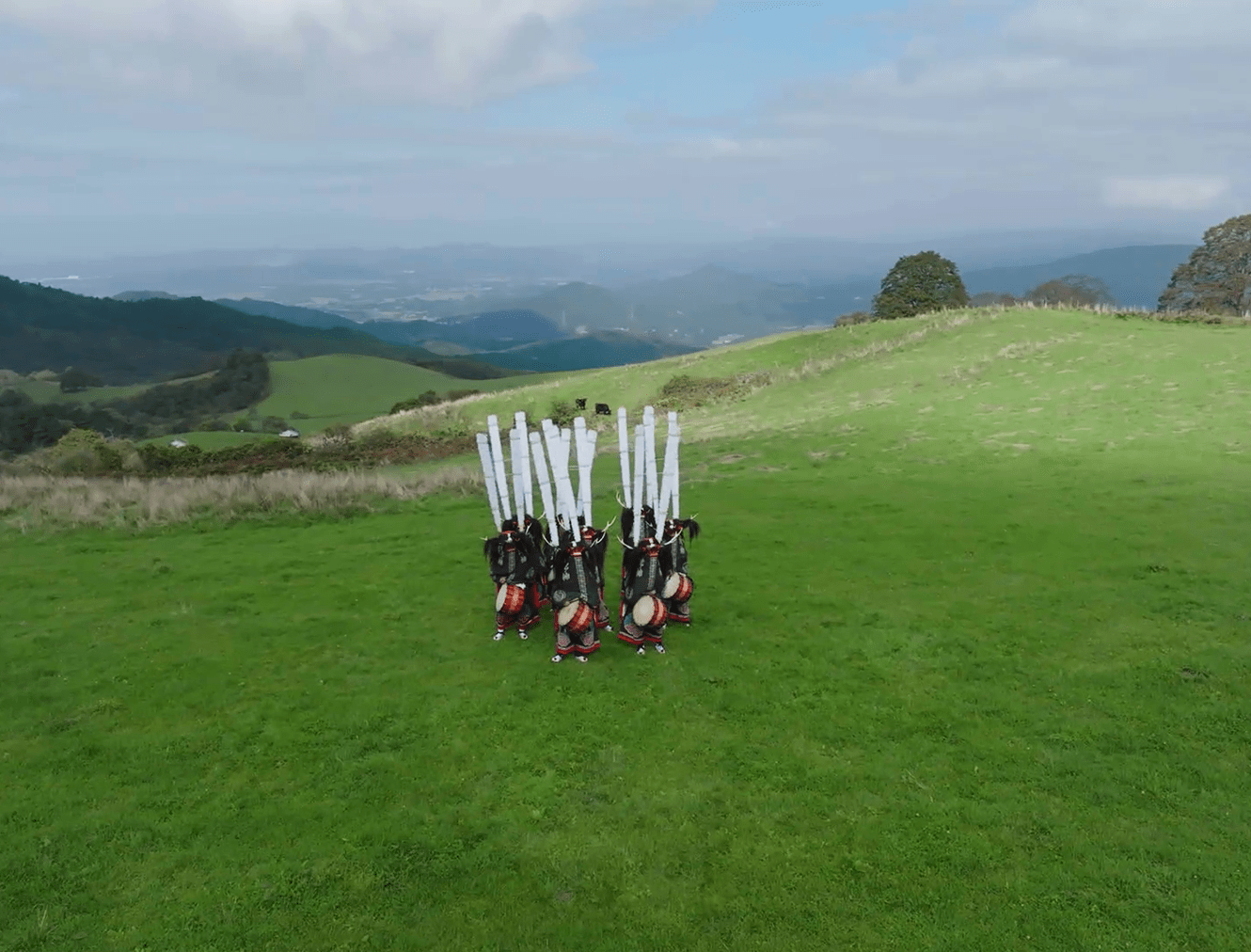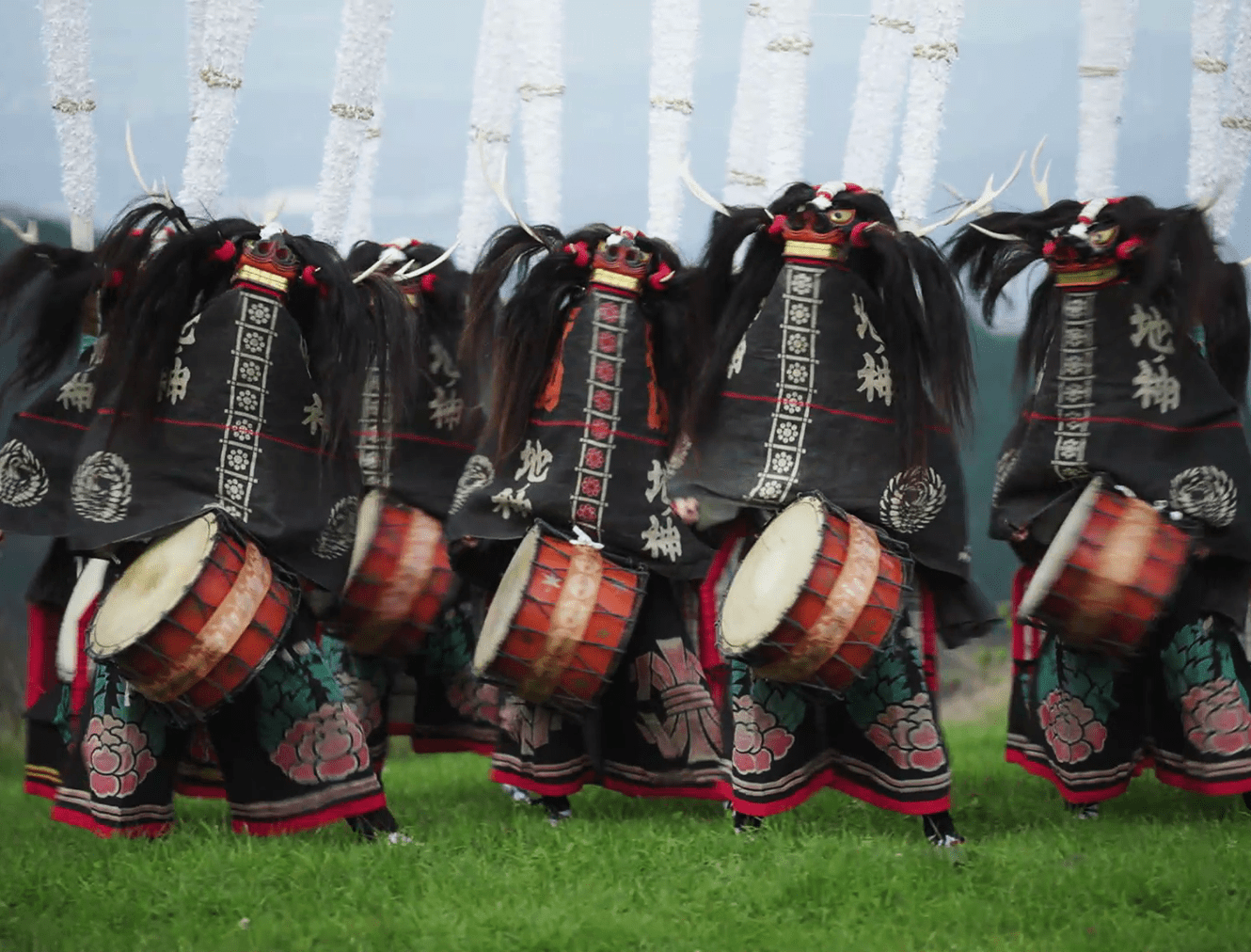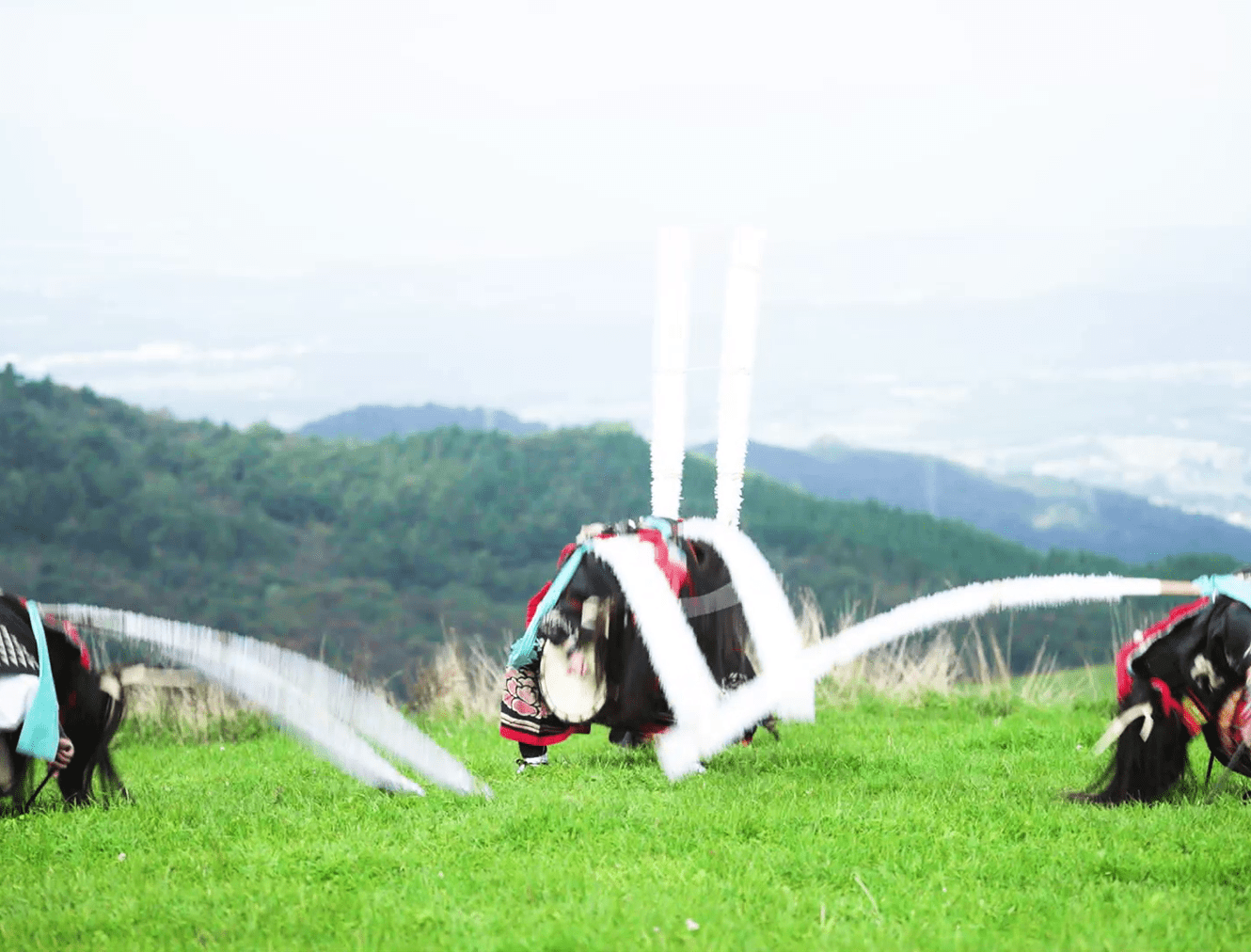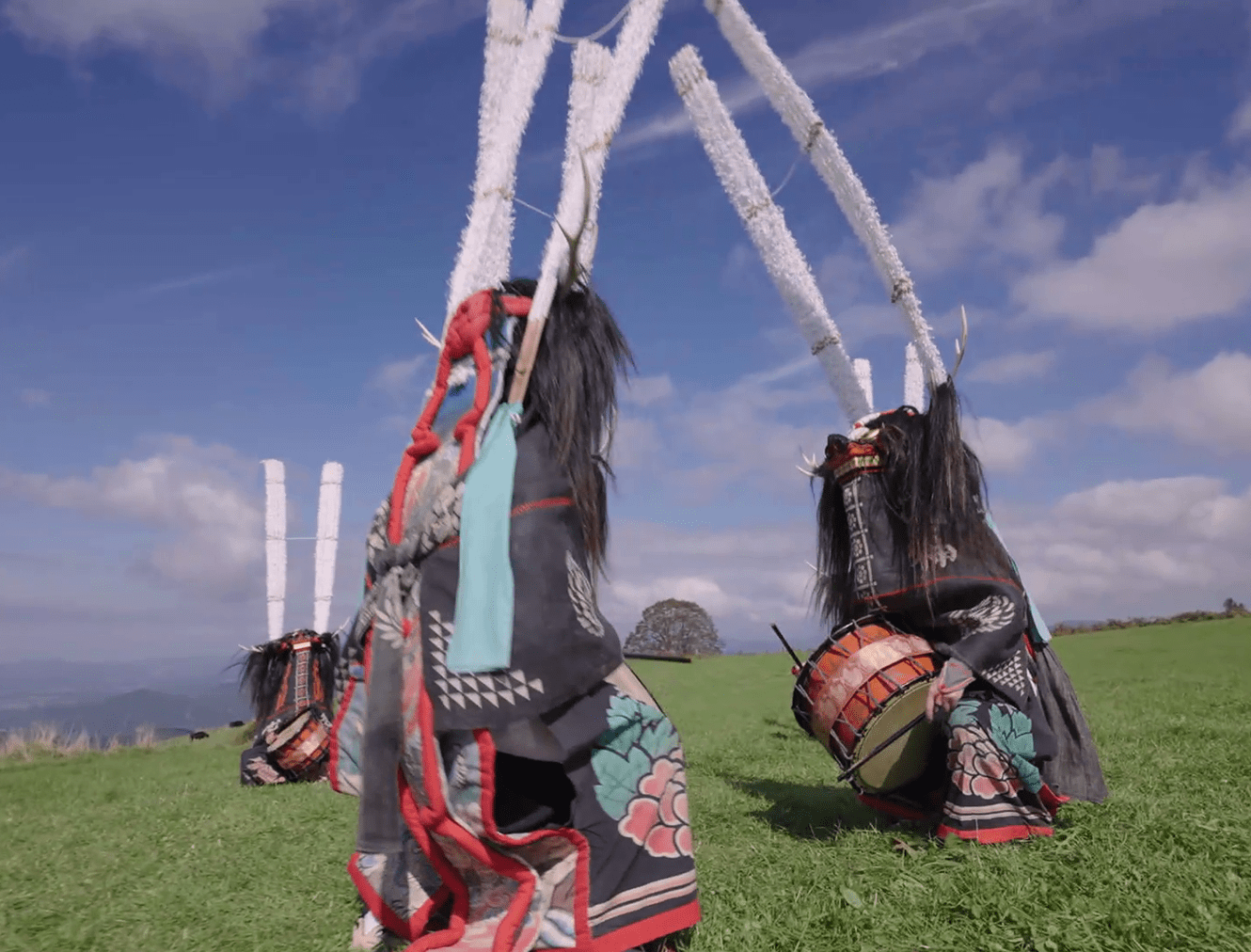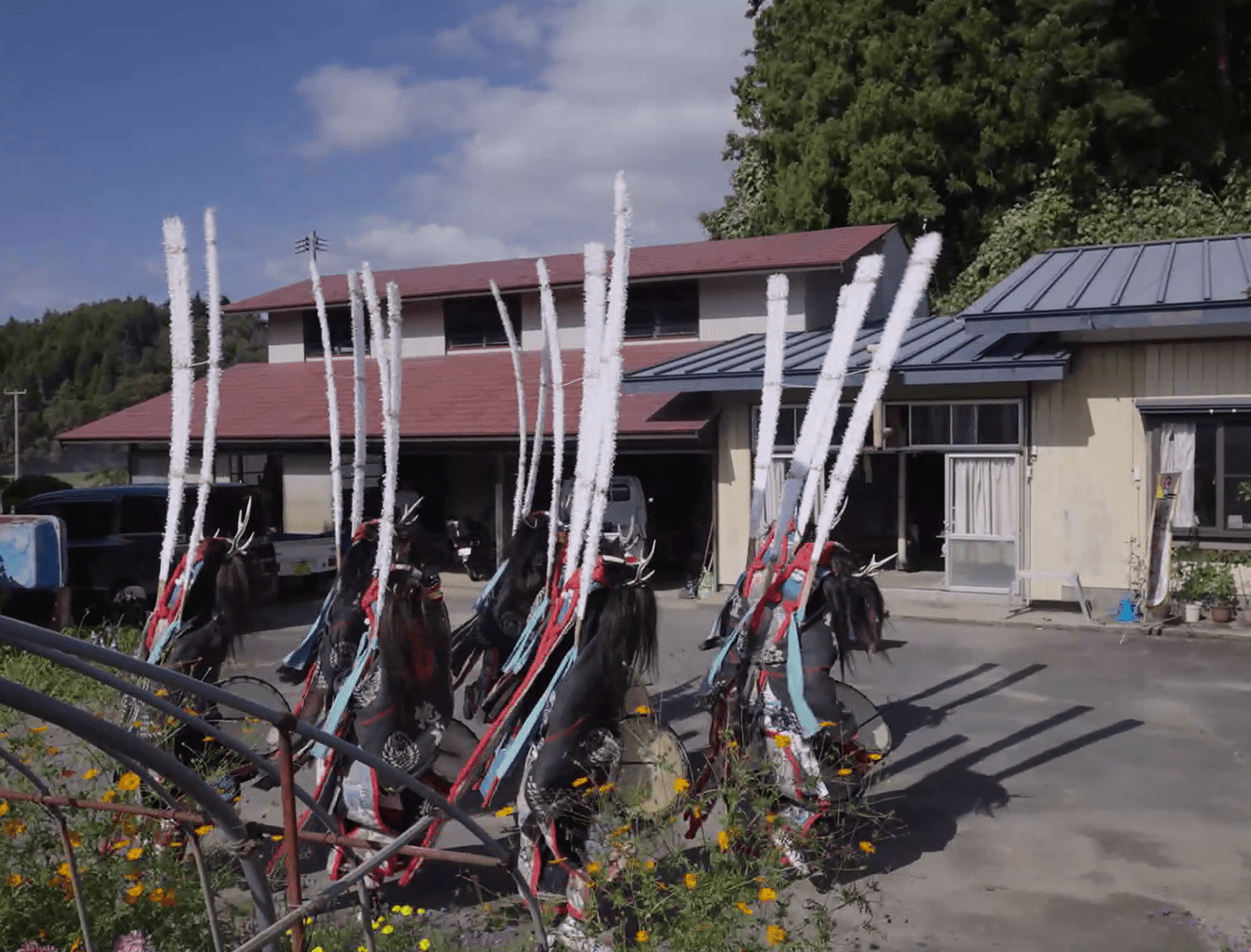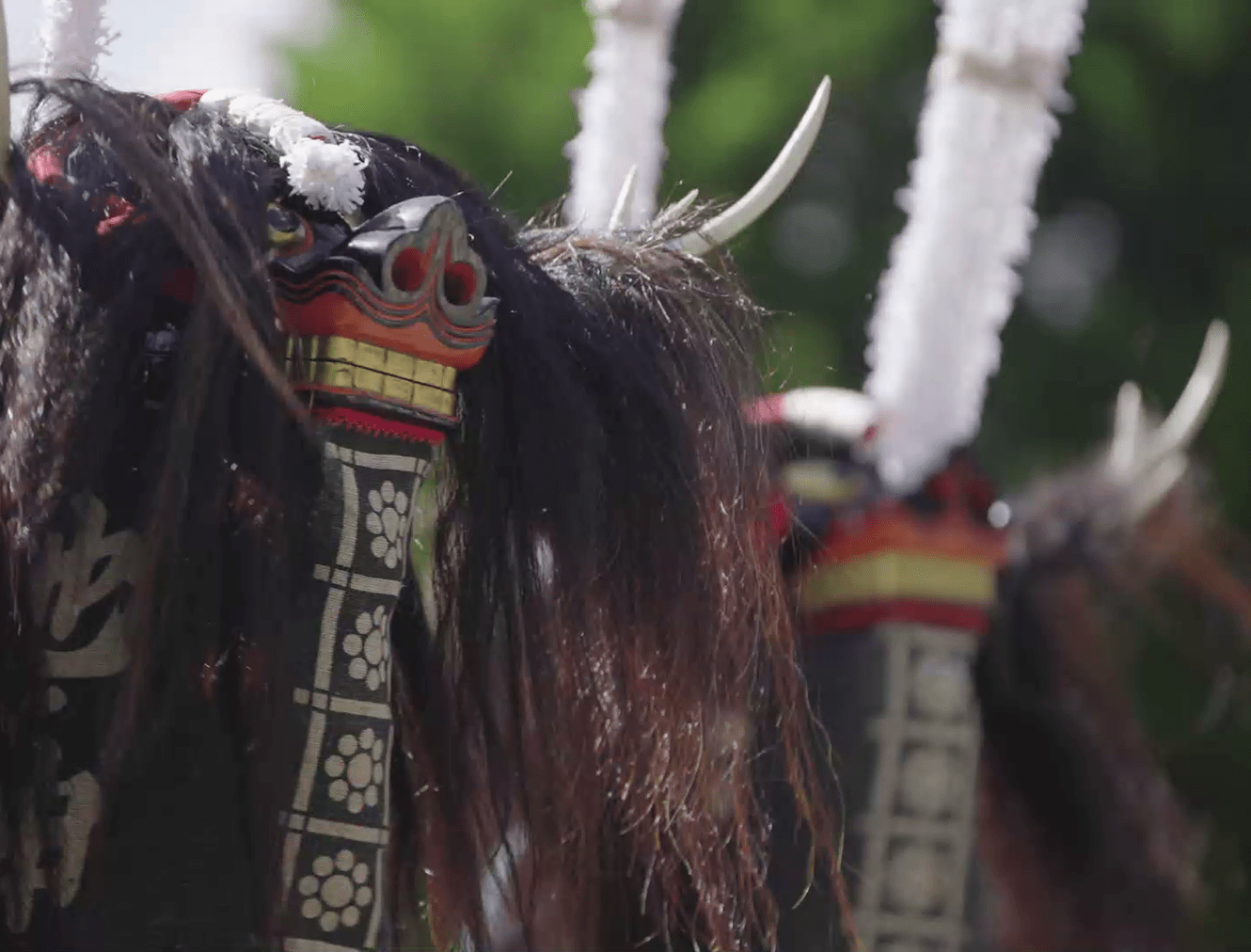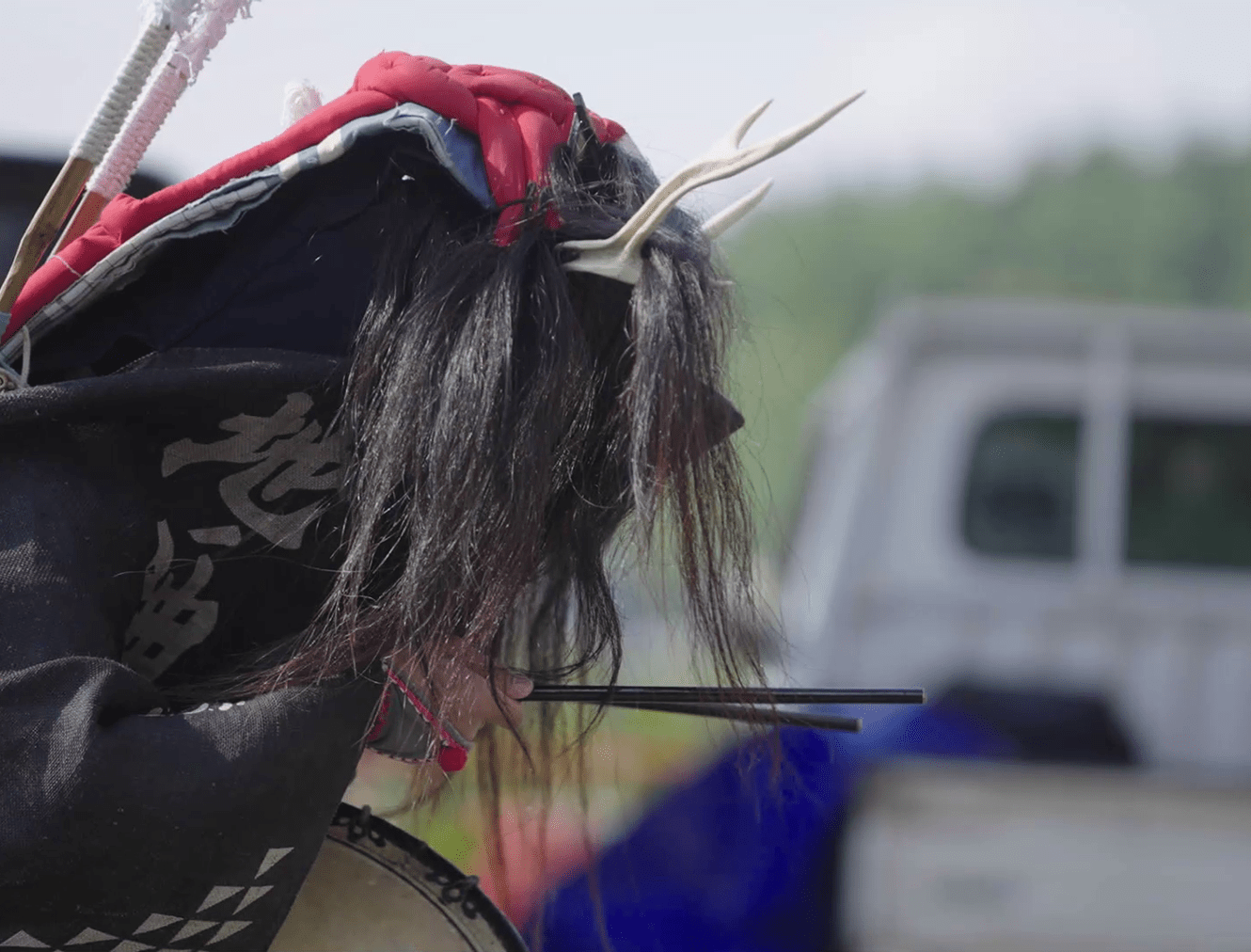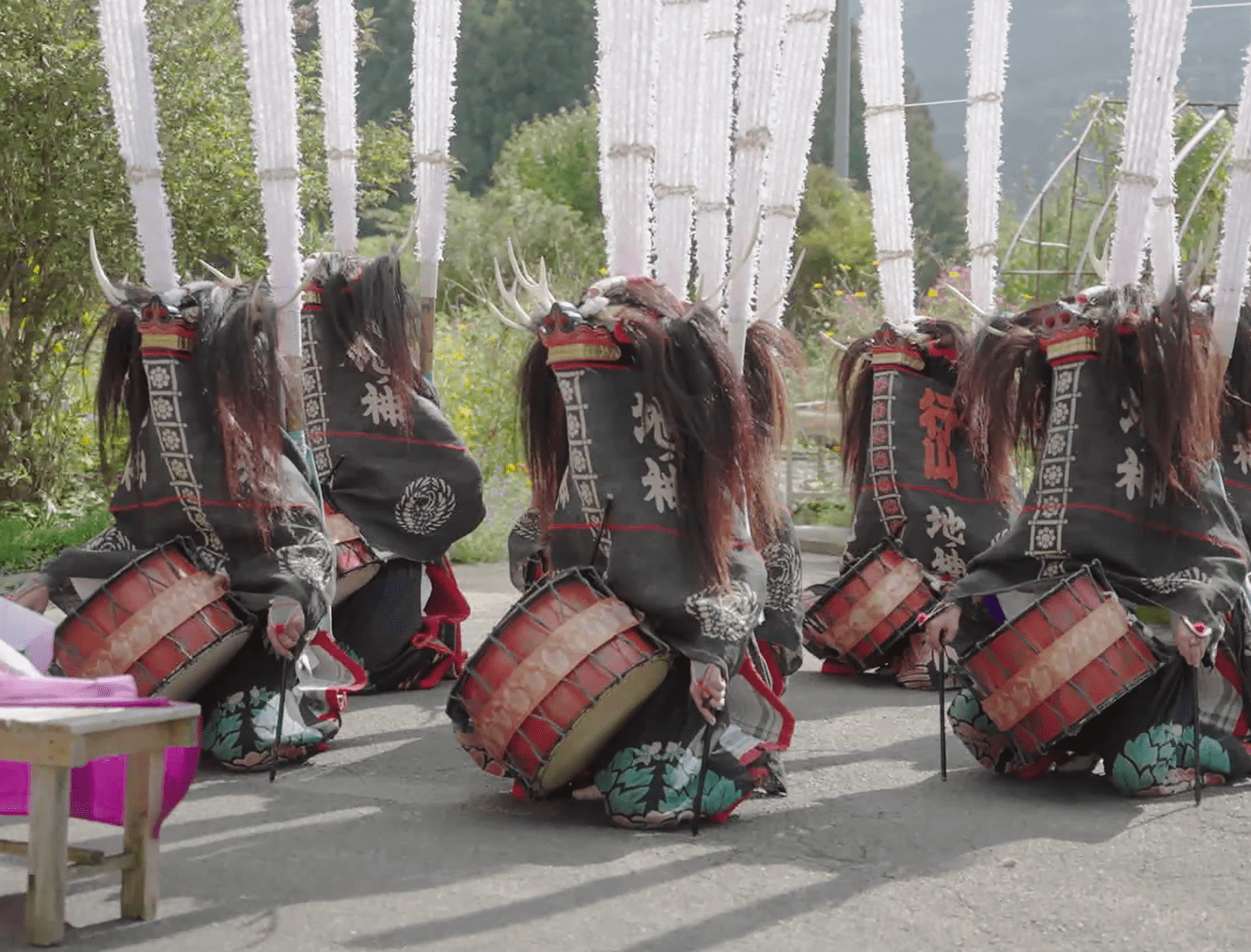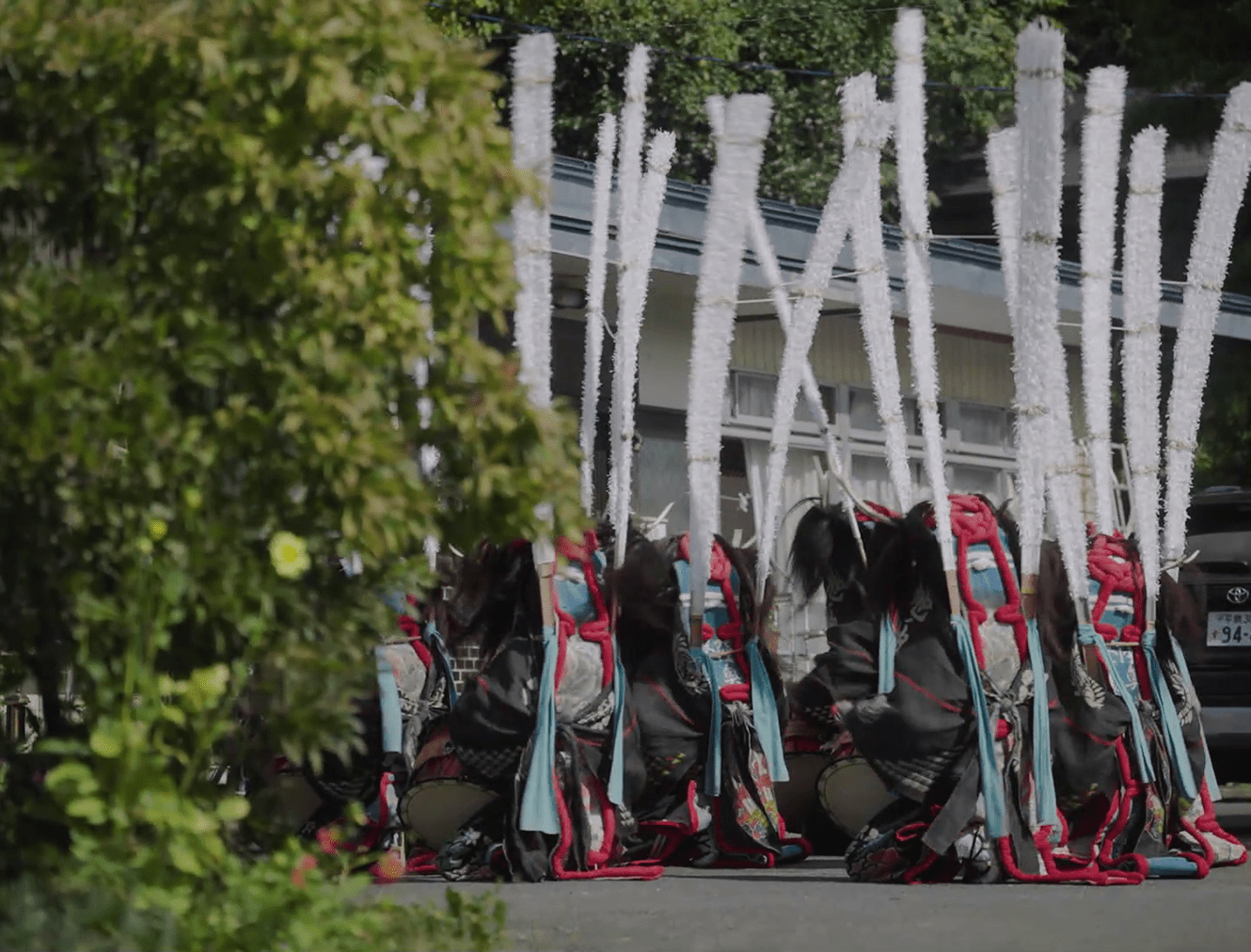World
Festivals
Shishi-Odori (Deer Dance)
A Deer Dance that embodies the spirit of mountain beasts, offering prayers for all living beings.
Oshu City and Esashi City, Iwate Prefecture, Japan
The Deer Dance of Northern Miyagi and Southern Iwate Prefectures features performers wearing deer masks and carrying Sasara, a bundle of thin bamboo slats on their backs, while playing drums, singing, and dancing
The Shishi-Odori is a traditional performing art primarily passed down in the Tohoku region, where dancers embody Shishi, mountain beasts such as deer, boars, and bears. This dance is typically performed during Obon to honor the spirits of the deceased or at shrine festivals as a prayer for a bountiful harvest.
In northern Miyagi Prefecture and southern Iwate Prefecture, the Shishi-Odori takes the form of a Deer Dance (Shika-Odori), where performers wear deer masks with antlers and carry a "Sasara" (a bundle of thin bamboo slats) on their backs. They perform a Taiko-Odori-style dance, in which they beat drums attached to their bodies, sing, and dance in unison.
The Esashi region in Oshu City, Iwate Prefecture, is particularly well known for its grand group performances, with the "Hyakushika Daigunbu" (Hundred Deer Mass Dance) being one of its most famous spectacles.
There are multiple theories regarding the origins of the Deer Dance: as a ritual to honor hunted deer and pray for their spirits, as a mimicry of deer playing in the mountains, and as a sacred offering linked to Kasuga Taisha Shrine, and so on.
This filming was carried out in the Ahara Mountain Plateau in the Esashi region, with the cooperation of the local Deer Dance group. The location was chosen for its resemblance to the natural setting of deer freely roaming and playing in the wild.
In Tokura, a district of Minamisanriku Town in Miyagi Prefecture—regarded as the birthplace of the Taiko-Odori (drum dance) style—a tradition known as Gyōzan-ryū Mitobe Shishiodori has been passed down for generations. Since the Edo period, a monument inscribed with the phrase "A dance to honor all living beings" has stood in the area as a symbol of the dance’s spiritual significance.
Although the Great East Japan Earthquake and its tsunami swept away all the traditional costumes and instruments, young dancers have successfully revived the tradition, ensuring that this sacred art of remembrance and gratitude continues for future generations.

